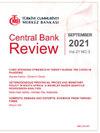An optimal early warning system for currency crises under model uncertainty
IF 1.2
Q2 ECONOMICS
引用次数: 0
Abstract
This paper assesses several early warning (EWS) models of financial crises to propose a model that can predict the incidence of a currency crisis in developing countries. For this purpose, we employ the equal weighting (EW) and dynamic model averaging (DMA) approaches to combine forecast from individual models allowing for time-varying weights. Taking Egypt as a case study and focusing only on currency crises, our findings show that combined forecast (EW- and DMA-based EWS), to account for uncertainty, perform better than other competing models in both in-sample and out-of-sample forecasts.
模型不确定性下货币危机的最优预警系统
本文通过对几种金融危机预警模型的评估,提出了一种能够预测发展中国家货币危机发生的模型。为此,我们采用等权重(EW)和动态模型平均(DMA)方法来组合来自允许时变权重的单个模型的预测。以埃及为例,仅关注货币危机,我们的研究结果表明,考虑不确定性的联合预测(基于EW和dma的EWS)在样本内和样本外预测中都比其他竞争模型表现更好。
本文章由计算机程序翻译,如有差异,请以英文原文为准。
求助全文
约1分钟内获得全文
求助全文

 求助内容:
求助内容: 应助结果提醒方式:
应助结果提醒方式:


